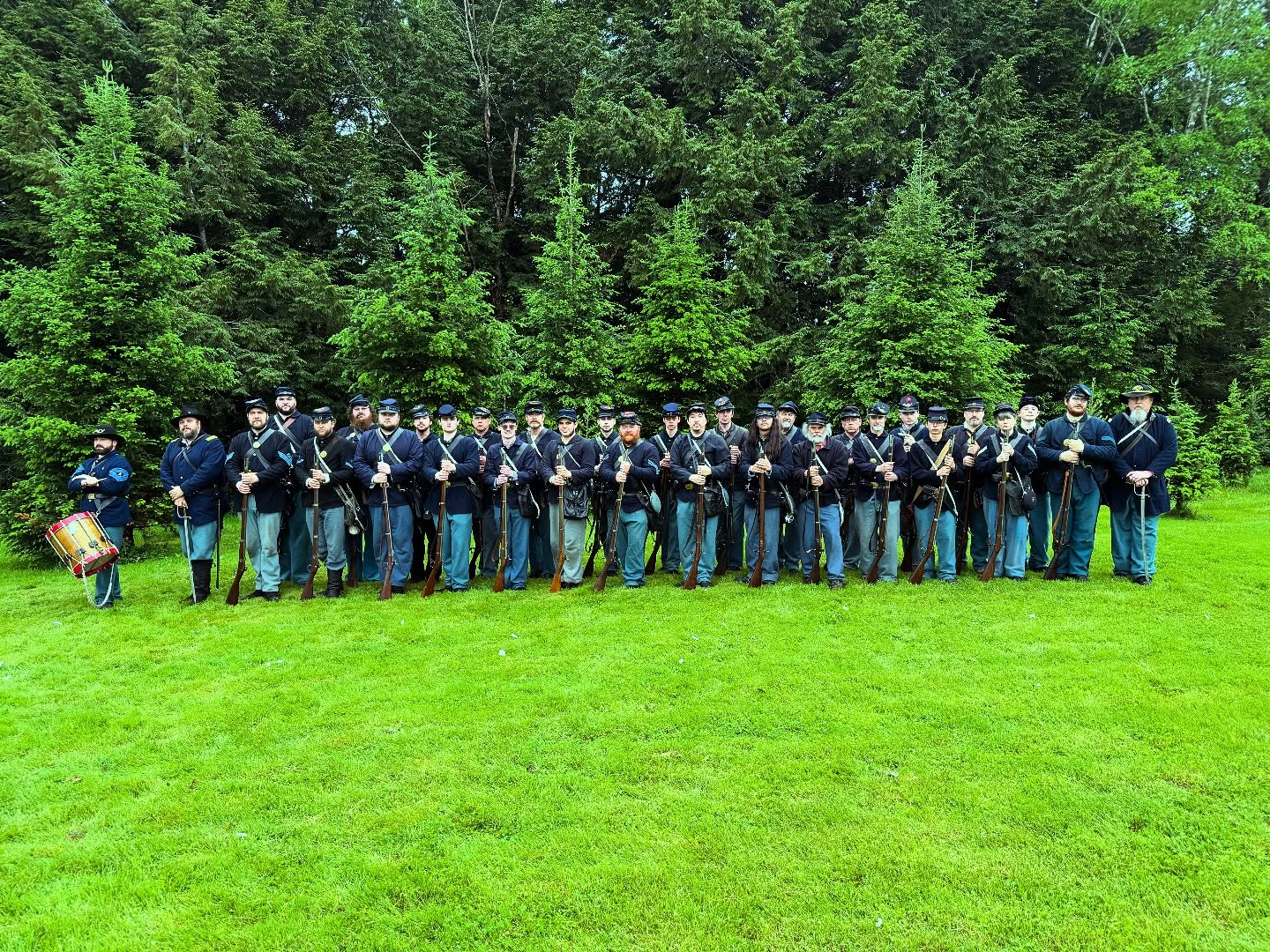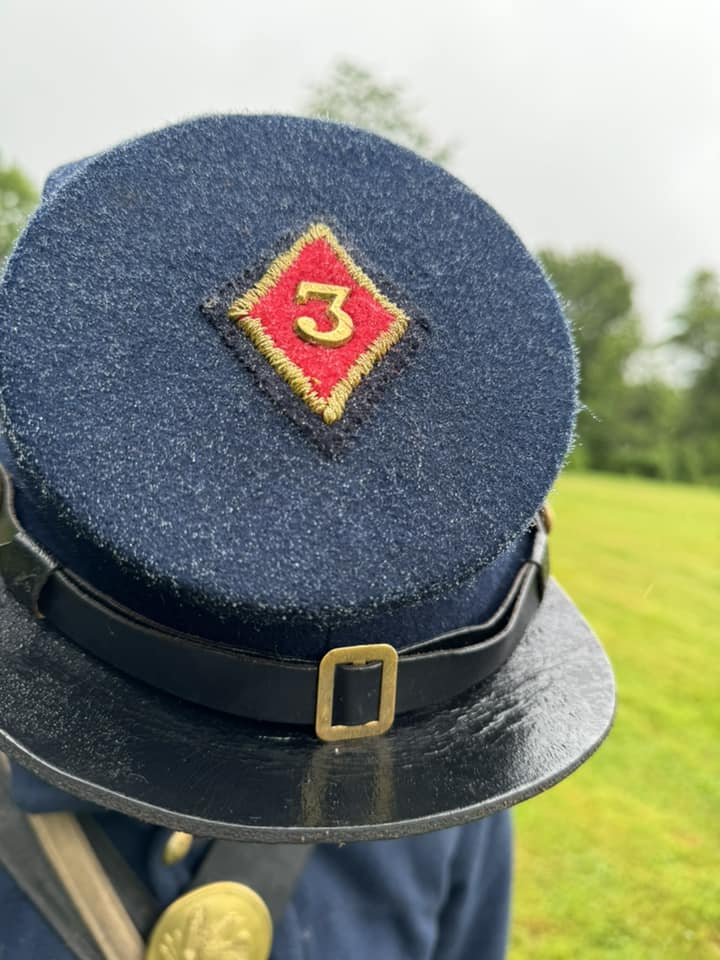INFANTRY

The infantry of Company A is organized around the same type of military structure used in the 1860's. We are commanded by a Captain. The 1st and 2nd sergeants have direct responsibility for the men, and orders are relayed to individual privates though three to four corporals. Upon joining the infantry a new recruit or "fresh fish" is assigned to a squad led by a corporal for training and communication. Upon completion of his training the soldier is awarded his infantry horn and becomes eligible to be elected to higher rank. The veterans in our unit who have "seen the elephant" (the Civil War phrase for experiencing combat) wear the red, diamond-shaped Third Corps, 1st Division Kearny patch (see Unit History) on their caps. Our commissioned and noncommissioned officers are elected each year by the military membership.

Most of the procedures for moving infantry formations and the tactics used on the battlefield during the Civil War were derived from those used during the Napoleonic and Mexican-American wars that took place earlier in the 19th century. The infantry of Company A, 3rd Maine drill to learn these same maneuvers and employ them on the battlefield the same way they did in the 1860’s. The customary Civil War infantry attack was by mass formation, men shoulder to shoulder, two lines deep. During the Napoleonic Wars this tactic increased the effectiveness of the inaccurate smooth bore muskets that were in widespread use. Since the majority of small firearms used in the Civil War were rifled, however, the greater accuracy of the muskets often resulted in high casualties to the target infantry formations, even at relatively long range.

Keeping infantry soldiers in close line formation did have some advantages. It made it easier for the officers to maintain control of their units and relay commands (remember, there were no radios!), and it lessened casualties from bullets and solid cannon shot plowing through the formation from the front or rear. Lethal missiles directed at the formation from the flanks (sides) could travel along the length of the formation lines doing great damage, so protecting the flanks of infantry formations during battle was of paramount importance.
As did the men of the original 3rd Maine, our infantry utilize a three-banded rifled musket, typically the 1861 Springfield or 1853 Enfield. Safety is our top priority during musket fire training! People under the age of 18 who are physically able to safely handle a 10 - 11 pound musket may join our ranks under our policies and bylaws. Carrying a musket at out of state events or events with other units is allowed only by people who have reached at least 16 years of age. We welcome women in our infantry ranks, so long as a strong effort is made to appear male to the public from a distance.
For more information on the 3rd Maine Infantry, please contact us!
INFANTRY OFFICER STAFF 2025
| Captain: | Matt Bray |
|---|---|
| 1st Sergeant: | Thomas Pinette |
| 2nd Sergeant: | Dalton Hulsey |
| Corporal: | Derek Thomas |
| Corporal: | Mac Conant |
| Corporal: | Adam Cook |
| Corporal: | Tracey Levasseur |


